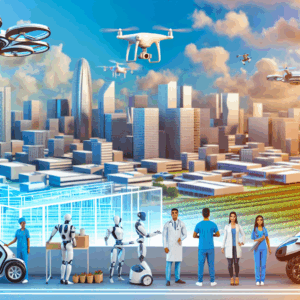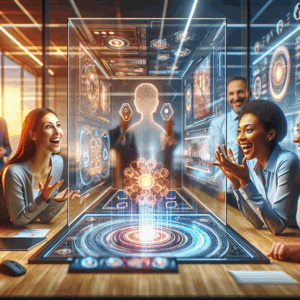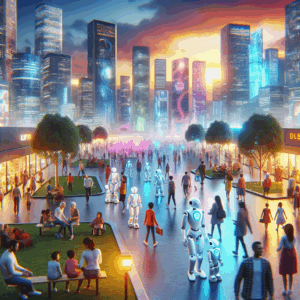AI Thinks It Cracked Kryptos. The Artist Behind It Says No Chance
In the world of cryptography and art, a fascinating debate has emerged. The Kryptos sculpture, created by Jim Sanborn, has been a source of intrigue for decades due to its encrypted messages. Recently, claims have surfaced that AI has cracked one of these codes, sparking a heated discussion between AI enthusiasts and the artist himself. This blog post delves into the history of Kryptos, the AI breakthroughs in cryptography, Jim Sanborn’s perspective, and the broader implications of AI in both cryptography and art.
I. Introduction
Kryptos, a sculpture located at CIA headquarters, has been a mystery since its installation in 1990. It contains four encrypted messages, three of which have been solved. The latest claim that AI has cracked the remaining message has ignited a firestorm of debate. Jim Sanborn, the artist behind Kryptos, disputes these claims, raising questions about the role of AI in deciphering artistic and cryptographic puzzles. This blog post aims to explore the background of Kryptos, the AI advancements in cryptography, and the artistic and cultural implications of these developments.
II. Background on Kryptos
A. The Sculpture’s History
Kryptos was created by Jim Sanborn and installed at the CIA headquarters in Langley, Virginia. The sculpture is a large, copper plate with a series of cryptic messages etched into it. Sanborn’s intention was to create a work of art that would challenge the CIA’s cryptanalysts, reflecting his interest in the intersection of art and cryptography.
B. The Encrypted Message
The encrypted messages on Kryptos are a combination of cryptographic techniques, including Vigenère and Caesar ciphers. Three of the four sections have been solved, but the fourth remains a mystery. The unsolved section is particularly challenging due to its use of a complex cipher that has stumped cryptographers for decades.
III. AI’s Breakthrough in Codebreaking
A. Development of AI in Cryptography
AI has made significant strides in cryptography over the past few years. From cracking simple ciphers to tackling more complex cryptographic challenges, AI systems have shown remarkable capabilities. This is largely due to advancements in machine learning and natural language processing, which allow AI to analyze patterns and make predictions more effectively than traditional methods.
B. Specifics of the AI Claim
The recent claim that AI has cracked the unsolved section of Kryptos involves using advanced machine learning algorithms to analyze patterns within the encrypted text. These algorithms can process vast amounts of data quickly, identifying potential keys or patterns that human cryptographers might miss. However, the specifics of the methodology used by the AI system in question remain unclear, adding to the skepticism surrounding the claim.
IV. Jim Sanborn’s Perspective
A. Artist’s Response to AI’s Claims
Jim Sanborn has expressed skepticism about the AI’s ability to truly understand the artistic intent behind Kryptos. He emphasizes that the sculpture is not just a cryptographic puzzle but a work of art meant to be interpreted on multiple levels. Sanborn’s perspective highlights the importance of human intuition and creativity in deciphering complex artistic and cryptographic works.
B. The Importance of Artistic Intention
Sanborn’s vision for Kryptos was not solely to create a cryptographic challenge but to craft a piece that would engage viewers on both intellectual and emotional levels. The artistic intention behind Kryptos underscores the complexity of interpreting creative works, especially when AI systems are involved. While AI can analyze patterns and codes, it may struggle to fully grasp the nuances of artistic expression.
V. Comparison of Traditional Code-breaking vs. AI Technologies
A. Tools and Techniques
Traditional code-breaking relies heavily on human intuition, pattern recognition, and manual techniques such as frequency analysis or brute force methods. These methods can be time-consuming but allow for a deep understanding of the cryptographic techniques used.
B. Advantages and Limitations of AI in Codebreaking
AI offers speed and scalability in analyzing vast datasets, making it ideal for complex cryptographic challenges. However, AI systems lack the human touch and may overlook subtle clues or artistic nuances that are crucial to understanding the full context of a cryptographic puzzle.
VI. Cultural and Artistic Implications
A. The Role of Art in Interpretation
Art is inherently subjective, allowing for multiple interpretations based on personal experiences and perspectives. The Kryptos sculpture, as a work of art, invites viewers to engage with it on various levels, from the cryptographic to the aesthetic.
B. AI’s Impact on Creative Works
The integration of AI into creative fields raises questions about authorship, interpretation, and the role of human creativity. While AI can generate art or assist in creative processes, it challenges traditional notions of what it means to create. In the context of Kryptos, AI’s involvement highlights the tension between technological advancements and artistic intention.
VII. Conclusion
The debate over whether AI has cracked the Kryptos code underscores the evolving relationship between technology and art. While AI has made significant strides in cryptography, the artistic and cultural implications of these advancements are complex and multifaceted. As AI continues to influence various fields, it is essential to consider both the capabilities and limitations of these technologies, especially when they intersect with creative works like Kryptos.
External Links:
- IBM Insights: AI Agents in 2025
- Alibaba’s AI Breakthroughs
(For insights into recent AI developments and their applications.)
This blog post aims to spark a discussion about the intersection of AI, cryptography, and art, inviting readers to consider the implications of technological advancements on creative works.





